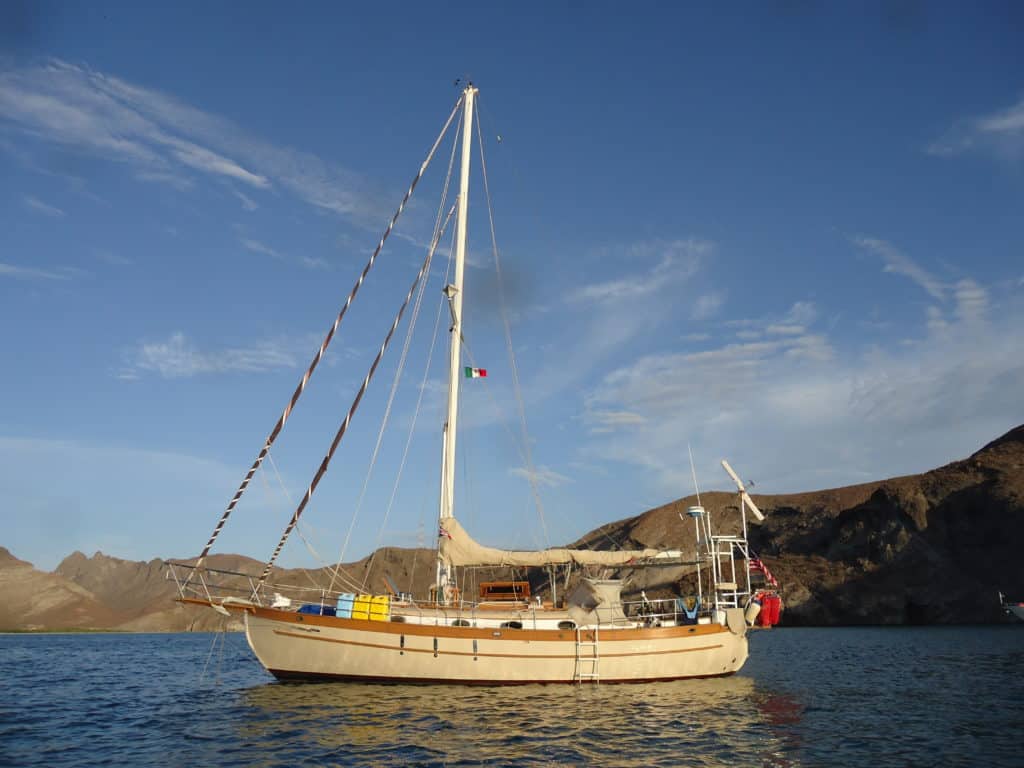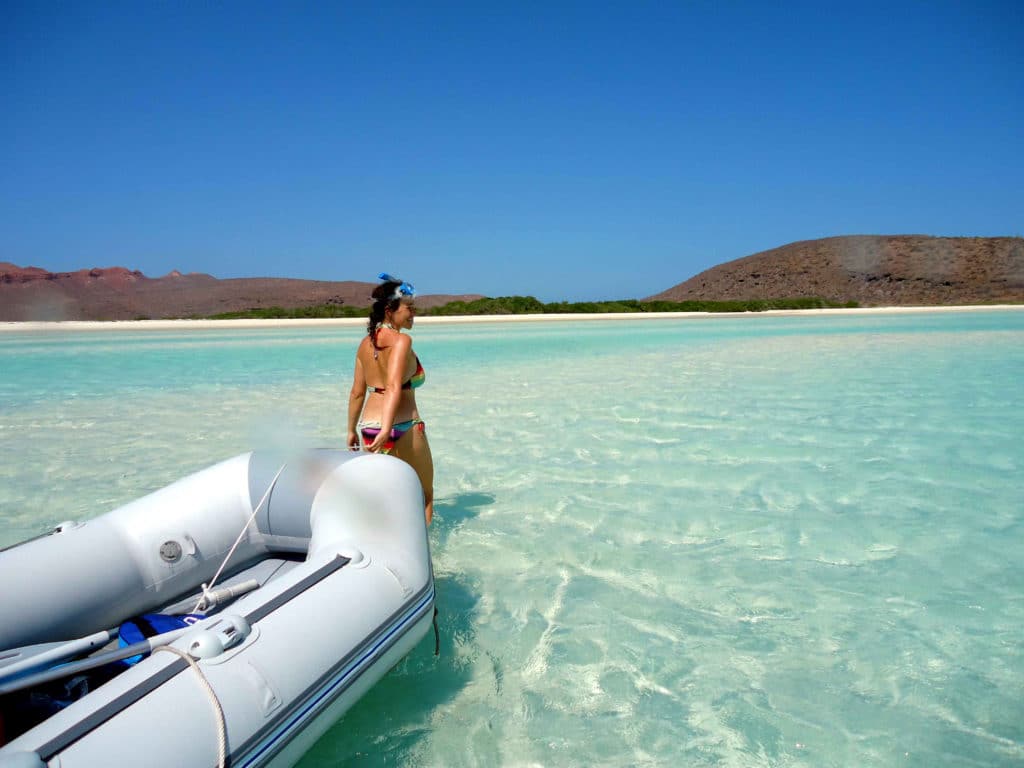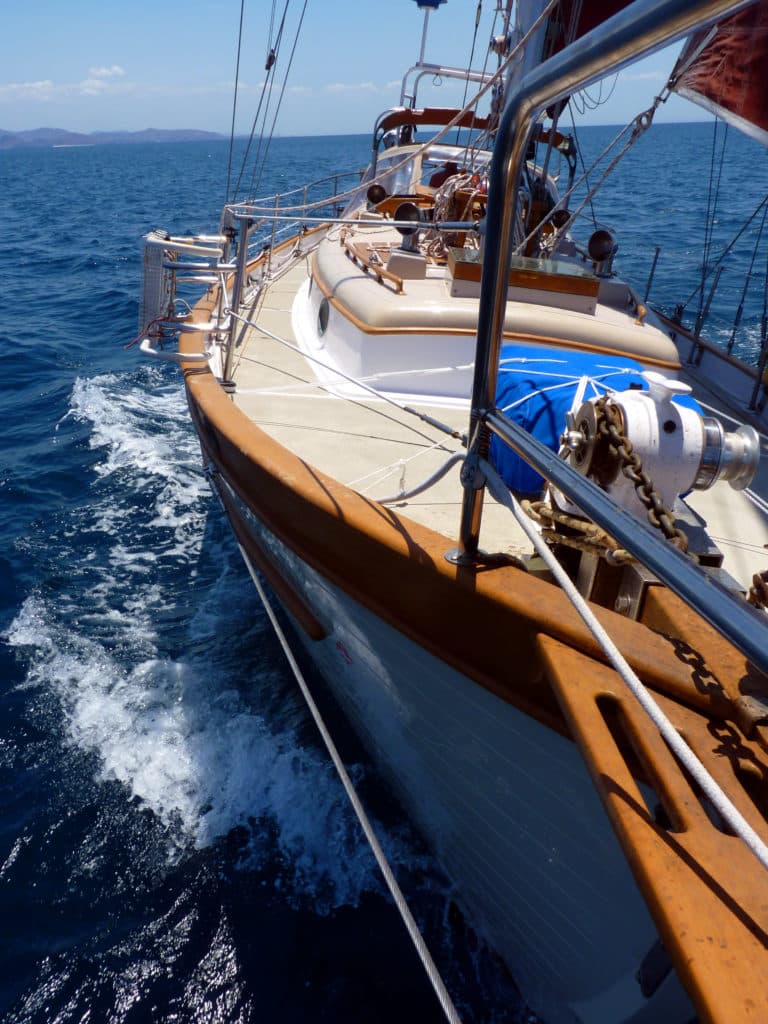
Pacific coast of Mexico has one of the world’s best cruising grounds: the Sea of Cortez. Within its 2,500 miles of coastline, the Gulf of California is protected from big Pacific swells by the Baja California Peninsula. It offers hundreds of gorgeous islands and anchorages — and is a great place to buy a sailboat.
I was in the market for a new boat and was keen on the idea of buying one in an area where I wanted to cruise. The Pacific coast of Mexico fit the bill perfectly. My search began in Mazatlán, on the Pacific coast south of the Baja Peninsula, where I looked at a number of boats, including a wonderful Rafiki 37, a double-ender designed by Stan Huntingford. I was impressed by both the maintenance level and inventory of cruising gear aboard many of the vessels.
In my travels, it has seemed that most boats for sale in Mexico are owned by Americans who sail them down from the States, float around the Sea of Cortez for a while, and then don’t fancy the bash home to windward. The boat then gets put on the market (quite often with the threat of divorce explicitly or implicitly made) at a fairly decent price.
Toward the southern end of Baja California is the city of La Paz (which means “peace” in Spanish), whose wide harbor is a mecca for sailors from all over. I went there next, to meet Shelly of La Paz Yachts, who had several interesting boats on her books, including a nearly immaculate Hans Christian 36, which I eventually bought for almost exactly half of what my girlfriend, Jasna, and I sold our modest little steel sloop for in Australia. The Hans Christian is a Bob Perry-designed double-ended cutter; now two years on, we are just beginning to realize what a great boat she is.

Why Buy in Mexico?
Many Americans are wary of Mexico, and this has more to do with the media than with reality. You don’t have to watch TV for very long before an unimaginative director portrays a Mexican as a desperado, drug-addled bag snatcher or cartel boss. Nothing could be further from the truth.
I have traveled and worked all over Europe, the Middle East, Africa and the Pacific, and it would be hard to find a stereotype so profoundly undeserved. In my experience, most folks I’ve come across in Mexico have been industrious, honest, family-oriented and friendly people with an amazing tolerance of the fairly dismissive attitude TV-educated foreigners have toward them (even in their own country).
On top of that, there are loads of nice boats in the country, and the sellers are serious.
During our purchase of the Hans Christian, La Paz Yachts handled the paperwork, titling and escrow seamlessly, and the company has continued to assist us above and beyond the call of duty. The bureaucracy is made easy by the Mexican government (see sidebar), and everyone I dealt with was friendly and helpful. Unlike in some states in the U.S., there is no sales tax. On top of all that, there is no panic to get your boat out of the country (as there is in many nations), because Mexico gives you a 10-year Temporary Import Permit for the princely sum of $50.
Perhaps the best part of buying a vessel in this region of Mexico is that you have the whole Sea of Cortez and Pacific coast to get used to your new boat and sample the delights of what Jacques Cousteau once called “the world’s aquarium.”
Now, if all the above is still not making you want to head for the Aeromexico ticket desk, then consider also the food, music, tequila, beer, weather, countryside, artwork, crystal-clear water, fabulous fishing and the wonderful affordability of it all. We came to buy a boat and stayed for three years (and even became temporary Mexican residents). Come down and see for yourself!
The Details:

Getting There: You likely can fly to Mexico directly from an airport near your home; however, the cheapest way is often to fly to Los Angeles and change there to a local flight to La Paz or Cabo San Lucas. There is also a bus from San Diego to La Paz, which is much more comfortable than you would imagine, and no one seems too bothered by how much luggage you throw on it.
Visas: U.S. residents can have up to 180 days upon entry, but you need to ask for it, as immigration officials will often just stamp vacationers in for a couple of weeks. The visa is easily extendable for another six months. If you want to stay longer, you can become a temporary resident. We did, and it was straightforward, taking two 15-minute visits to immigration.
Taxes: There are no taxes for buying a foreign-registered boat in Mexico (which is pretty much all of them). You need to apply for a Temporary Import Permit, which will allow you to keep your boat in the country for 10 years before incurring taxes. The whole process took us less than an hour and cost about $50.
Language: Both Jasna and I are fairly good Spanish speakers, but we didn’t have the opportunity to use our skills much, as all the brokers and chandleries are set up by or cater to the American market.
Brokers: There are four brokerages on the west coast of Mexico that operate under the umbrella of Mazatlán Marine Center (mazmarine.com): La Paz Yachts, Puerto Vallarta Yachts, Mazatlán Yachts and San Carlos Yachts. We worked with La Paz Yachts, and I cannot recommend them highly enough.
Price: Prices tend to be advertised high and come down a fair amount. We paid about 60 percent of the asking price. While sellers will of course vary in what they will accept, don’t be afraid to put in a low offer — there are more sellers than buyers!
Surveys: Plenty of good surveyors operate in La Paz and mainland Mexico. I used Dennis Ross, who lives on his yacht, Toucan Play. He can be reached on VHF channel 22.
Marinas and Moorings: La Paz is a large natural harbor with good holding. You can anchor for about $1 a day, but be sure to leave plenty of swinging room; the opposing wind and current can create a condition known locally as the “La Paz Waltz,” wherein boats can swing stern to stern. There are a few moorings for rent at about $75 a month. Marina prices vary enormously depending on if you pay daily, monthly or yearly, and whether you want one in a resort or on a budget. We recommend anchoring out or getting a mooring buoy and saving your pennies. La Paz has a definite cyclone season from mid-May through November, and leaving during it is a good idea. Failing that, taking a marina berth for the riskier months (August to October) is a viable option.
Rick Page is currently sailing Calypso back home to Australia with his girlfriend, Jasna Tuta. You can follow along with their adventures on their website (sailingcalypso.com).








